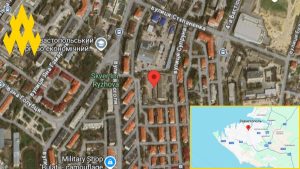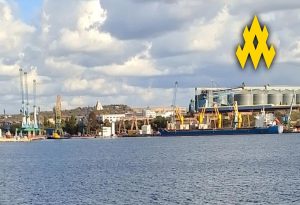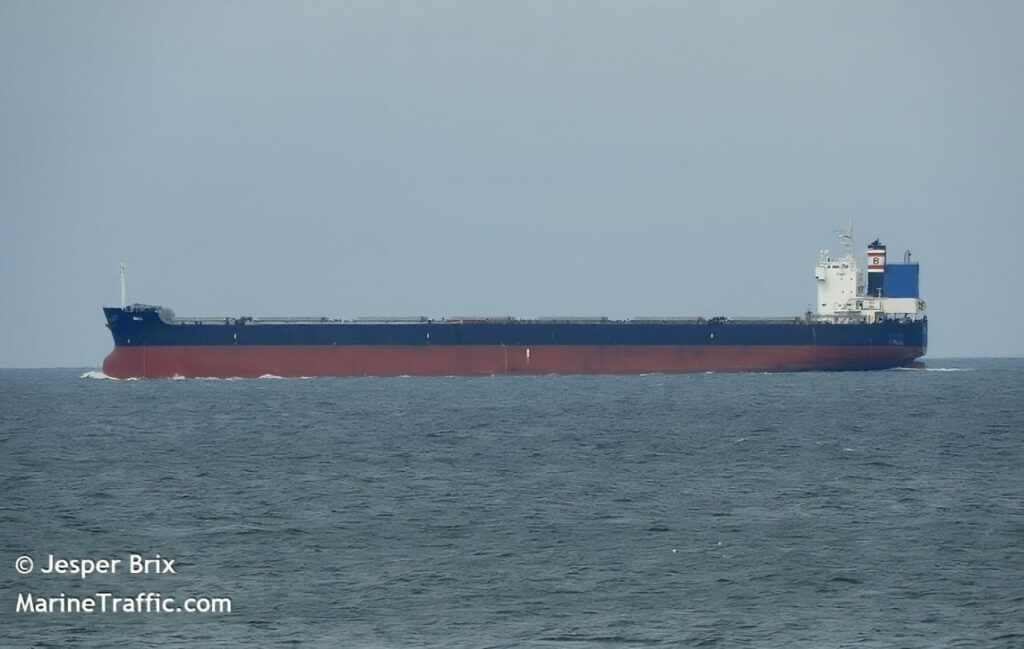A ship of the Black Sea Fleet raised the Ukrainian flag: as it was 106 years ago
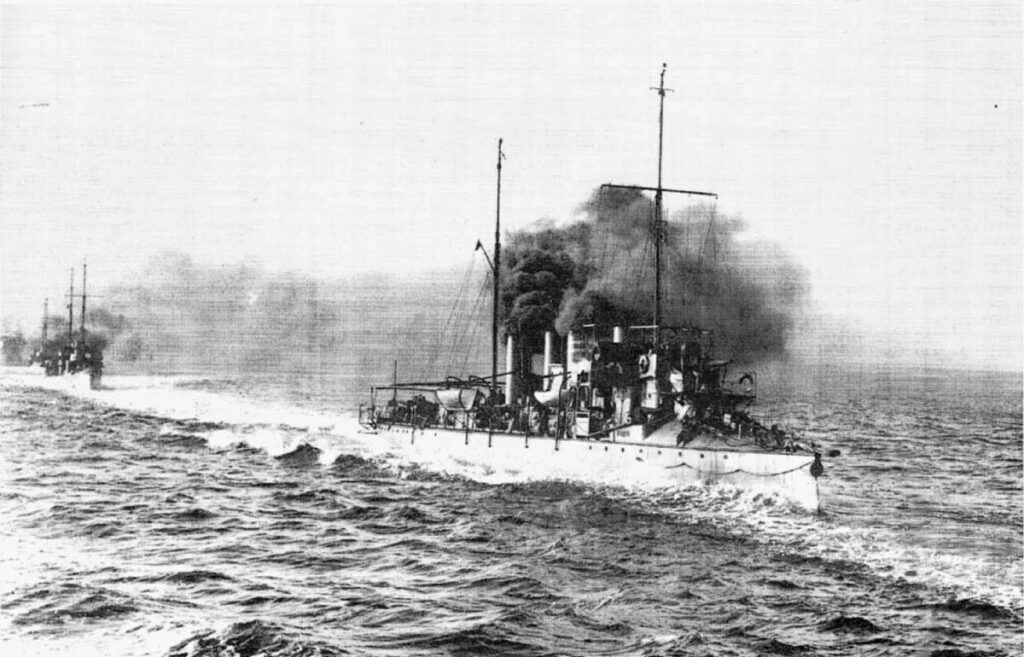
It is hard to believe now, but more than 100 years ago, a destroyer of the Black Sea Fleet of the Russian Empire raised the flag of Ukraine and refused to lower it. How did it happen? And what happened next?
In July 1917, the ship “Envious” (of the “Covenant” type) of the Black Sea Fleet of the Russian Empire raised the Ukrainian flag.
After the February Revolution, the ship was Ukrainianized. He raised the Ukrainian flag for the first time in July 1917. And on October 12, “Envious” raised the flag again, but refused to lower it. On the same day, the manifesto of the destroyer crew was published in all newspapers.
In the document, the sailors stated that they raised the flag to “show that, despite age-old oppression, the sons of our glorious mother Ukraine are still alive, which means that the force that must restore the rights of our glorious, dear mother Ukraine is alive.” .
“Through this, we have shown that we, like the entire democracy of Russia, demand the proclamation of the Russian federal democratic republic, which means we demand autonomy both for others and for the whole native and dear mother Ukraine,” the crew said.
At the end of their message, the sailors noted that they would not lower the flag they had raised “as long as we live and there is an Envy destroyer.” And they really lasted a very long time.
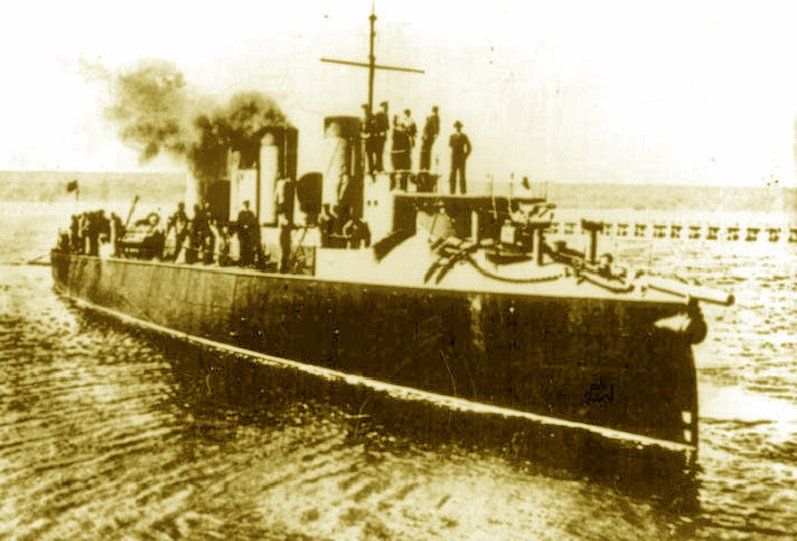
Destroyer “Zavydnyi”.
Chronology
In October 1917, Black Sea sailors received a message about Ukrainization in the Baltic Fleet. In honor of this, by prior agreement with the command, all ships and ports of the Black Sea Fleet raised Ukrainian flags and flags “Long live free Ukraine” for one day.
October 12. The destroyer “Zavidnyi” raised the Ukrainian flag. An appeal to the crew was published in the newspapers.
In Sevastopol, Ukrainians organized a solemn march and parade of thousands of people near the monument to Admiral Nakhimov.

Ukrainian flag of the Sevastopol naval half-crew.
October 17. Russian Maritime Minister Verderevskiy responded to the sailors’ statement. In a telegram to the Central Rada, he emphasized that raising the Ukrainian flag on ships of the Black Sea Fleet is an “act of separatism.” For example, the fleet, which is supported by funds from the Russian treasury, cannot raise any flag on its ships, except for the Russian one.
Verderevskyi believed that the Central Council itself should influence the sailors so that the fleet would lower the Ukrainian flags and raise the Russian ones. But the minister’s request was ignored.
November 15. All ships of the Black Sea Fleet kept the Ukrainian flags raised and the signal “Glory to the Ukrainian People’s Republic” during the whole day.
Unfortunately, in December, the Bolsheviks were able to impose their views on almost all the sailors of the Black Sea Fleet, as they always do – with the help of propaganda and terror.
December 3. All ships of the mine brigade lowered Ukrainian flags and raised red ones. But not “Enviable”.
December 24. After the capture of the battleship “Volya”, the last warships of the Ukrainian fleet remained that did not raise the red flag: “Zavidnyi” and the cruiser “Memory of Mercury”. Due to the threat of capture by the Bolsheviks, the ships moved to Odessa by order of the Ukrainian Maritime Ministry.
Cruiser “Memory of Mercury”.
January 1918. The Bolsheviks seized the ships. The revolutionaries took “Zavidnyi” to Sevastopol.
April 29. The sailors again raised the Ukrainian flag over the destroyer. They remained under it until May 3.
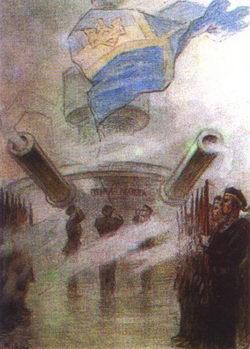
Raising the Ukrainian flag on April 29 in the interpretation of the centurion of the Army of the Ukrainian People’s Republic, artist Leonid Perfetskyi.
May 3. The ship was captured by German troops, who renamed it R.
November. “Zavidnyi” returned to the Ukrainian fleet and was to receive a new name – “Colonel Shramchenko”. But soon he was captured again, this time by Anglo-French interventionists.
April 24, 1919. The British blew up a destroyer and other, larger ships of the Black Sea Fleet.
April 29. The ship was captured by Bolshevik troops.
June 24. The Red Army was partially driven out of the city by the White Guards. Later, RSCHA occupied Sevastopol for the second time.
November 14, 1920. The destroyer received a new name, “Marty”, but was not included in the active fleet.
May 1922. The ship was planned to be repaired, but instead it was mothballed.
1923 year. The destroyer was handed over to Komgosfond for implementation.
November 21, 1925. “Marty” was finally removed from the Soviet fleet.
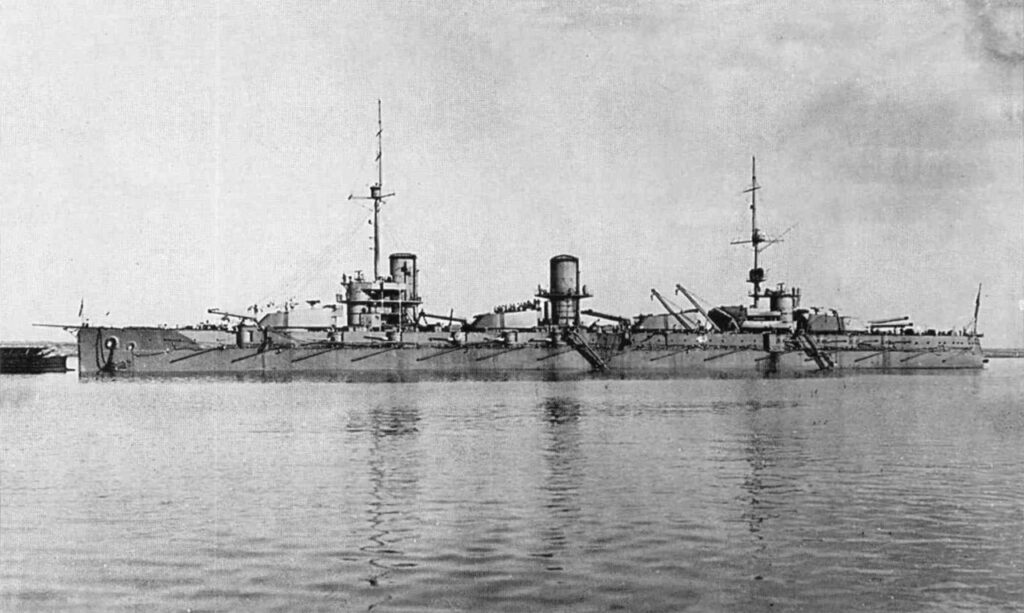
Line ship “Volya”.
Context
After February 1917, the process of national revival began in all corners of the then empire, including the Black Sea Fleet, where the majority of Ukrainians served.
Just in the fall of 1917, the question arose that battleships should raise blue and yellow flags. This happened after the Supreme Commander-in-Chief Kerensky ordered the Ukrainization of the cruiser “Svetlan” in the Baltic.

Ukrainian sailors’ manifestation, 1917.
The first gathering of Ukrainian sailors took place in March. At these meetings, the Sevastopol Ukrainian community was created, and in April, the Chornomorsk community was added.
The Black Sea community for the first time proclaimed the Ukrainian military doctrine:
• “having a fleet one and a half times stronger than all military fleets in the Black Sea area”;
• “to join the Sevastopol fleet with all Ukrainian naval forces in the Baltic and Caspian areas and in the Japanese area of the Green Wedge”;
• “to initially have in its composition three brigades of battleships, a brigade of cruisers, hydrocruisers, three divisions of destroyers, submarines and a certain number of special purpose ships.”
In addition, seaplanes were also to be part of the fleet.
In May 1917, the Black Army delegation took part in the work of the First All-Ukrainian Military Congress in Kyiv. The representatives put forward demands: the Black Sea Fleet should become an integral part of the Armed Forces of autonomous Ukraine, Ukrainian specialists should be repatriated to their homeland from other ports of the empire. In particular, the delegation advocated the opening of a Ukrainian maritime school.
The extensive Ukrainization of the Black Sea Fleet, in particular, was evidenced by the fact that on November 6, 1917, at the First All-Black Sea Congress, a decision was made to send 600 armed sailors to Kyiv to support the Central Council, as well as 17 delegates from the fleet.
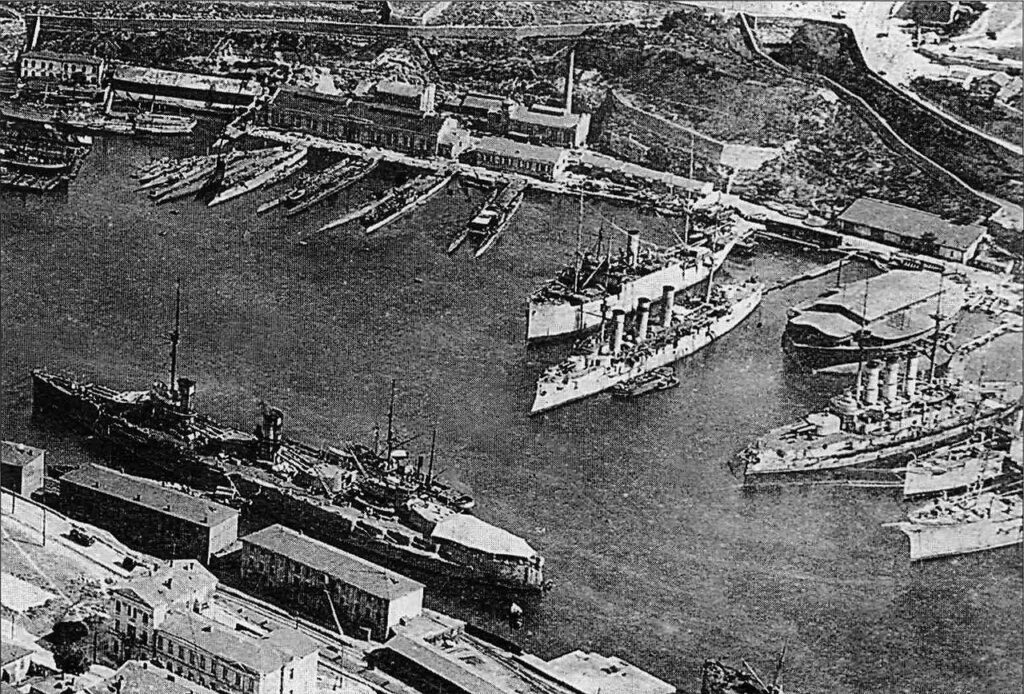
The southern bay of Sevastopol, August 25, 1918. Battleships, cruisers, destroyers and other ships.
It is interesting that the activities of the Ukrainian Black Sea Community of Sevastopol were supported by the then commander of the Black Sea Fleet, Admiral Oleksandr Kolchak.
At the first Ukrainian demonstration in Sevastopol on April 7, Kolchak announced that he considered it an honor “to speak to the Ukrainians who gathered here to declare their existence: the Black Sea Fleet, which I have the honor to lead, is 90% made up of the sons of this nation. I cannot help but congratulate the Ukrainian nation, which gave me the best sailors that exist in the world.”

Sources: Volodymyr Serhiychuk “Ukrainian Crimea”, 2001.

